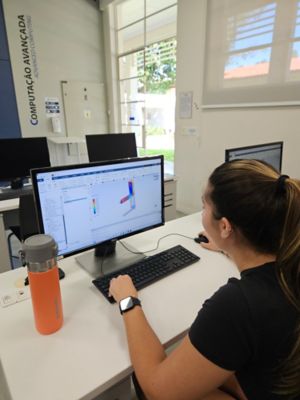The Design - Flow from a Chimney | ANSYS CFX
A chimney is an architectural ventilation structure made of masonry, clay, or metal that isolates hot toxic exhaust gases or smoke produced by a boiler, stove, furnace, incinerator, or fireplace from human living areas. Chimneys are typically vertical, or as near as possible to vertical, to ensure that the gases flow smoothly, drawing air into the combustion in what is known as the stack, or chimney effect. The space inside a chimney is called the flue. Chimneys are adjacent to large industrial refineries, fossil fuel combustion facilities, or part of buildings, steam locomotives, and ships.
In the United States, the term 'Smokestack Industry' refers to the environmental impacts of burning fossil fuels by industrial society including the electric industry during its earliest history. The term smokestack (colloquially, stack) is also used when referring to locomotive chimneys or ship chimneys, and the term funnel can also be used.
The height of a chimney influences its ability to transfer flue gases to the external environment via the stack effect. Additionally, the dispersion of pollutants at higher altitudes can reduce their impact on the immediate surroundings. The dispersion of pollutants over a greater area can reduce their concentrations and facilitate compliance with regulatory limits.
In this analysis, it has been tried to analyze how to make flow from a chimney using the ANSYS CFX software.
Geometry & Grid
The geometry required for this analysis was generated by Ansys Design Modeler software. The meshing required for this analysis was also generated by Ansys Meshing software. The mesh type used in this analysis is unstructured. The total number of volume properties for geometry is 320,41 mm³.
Model
In this analysis, a steady and transient analysis type was used to obtain the results to check the flow. In this analysis, non-buoyant models have been used and stationary domain motion has also been activated in this analysis.
Boundary Condition
In this analysis, the flow inlet, which only includes the air at 25 C, is defined as a velocity inlet. The mass flow rate value of mass and momentum velocity inlet is 0.01 [m s^-1]. The turbulence of the design modeler is set as an intensity and eddy viscosity ratio with a fractional intensity equal to 0.05 and an eddy viscosity ratio equal to 10.
Discretization of Equations
In this analysis, high-resolution is used for the advection scheme of the basic settings. In this analysis, the first-order is used for turbulence numerics. In this analysis, the residual type of convergence criteria is RMS and the residual target of convergence criteria is 1.E-4.
The results are presented as smoke contours as well as streamlines.
The Design Services
We also accept all CFD projects using ANSYS Fluent and ANSYS CFX. Our digital workshop has gathered experts in different engineering fields so as to ensure the quality of CFD simulations. One of our objectives is to boost the use of powerful computational fluid dynamics methods and also teach the engineers and those who seek professional knowledge in CFD.
ِDoing CFD projects will be faster and easier with our services. Call us for training in CFD applications and CFD packages. Our professional CFD engineers offer you professional consultation and technical supports for your academic CFD projects and industrial CFD projects. We offer you CFD learning, CFD project by ANSYS Fluent and ANSYS CFX, CFD consulting by ANSYS Fluent and ANSYS CFX, CFD service by ANSYS Fluent and ANSYS CFX, ANSYS Fluent and ANSYS CFX project, ANSYS Fluent and ANSYS CFX thesis, ANSYS Fluent and ANSYS CFX simulation, ANSYS Fluent and ANSYS CFX paper regeneration, ANSYS Fluent and ANSYS CFX academic project, ANSYS Fluent and ANSYS CFX industrial project, ANSYS Fluent, and ANSYS CFX research project, and low CFD Price. Moreover, we have years of experience in coordinating CFD projects. Therefore, we are ready to perform your CFD simulations in different engineering fields.




No comments:
Post a Comment